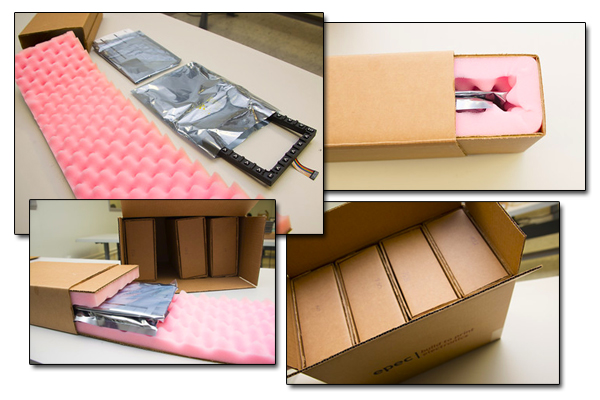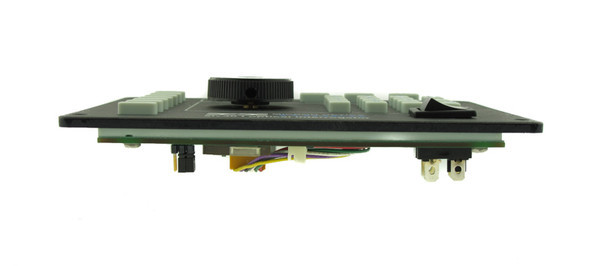Packaging for user interface assemblies is the last step in the manufacturing process, but not a step that should be rushed. Epec pays as much attention to packaging detail as we do to design and manufacturing of custom assemblies. Because each assembly part number is customized, each has different size, mass, and shape. However, styles of user interfaces can be grouped into several categories. Experience has shown the type of packaging that works best is based on complexity of construction, shape, size, mass and shipped unit volume. No one packaging solution works for every assembly style.
Static Sensitive User Interface Assemblies
All assemblies that are classified as static-sensitive (includes electronic components) must be packaged in conductive bags and the mouth of the bag folded and sealed with an ESD (Electro Static Discharge) warning label. Conductive bags must be conductive, not ant-static pink poly bags. The pink poly bags do not generate static changes but do not protect against ESD.
Once the static-sensitive assemblies are protected from ESD and electrical damage, the assembly must be protected from mechanical damage during shipment. User interface assemblies that are small mass and not static sensitive will be packaged in bubble bags. Assemblies that are classified as not being static sensitive contain a matrix of switches and non-electronic components. Larger assemblies that are not static sensitive will be protected with bubble wrap.

Individually Packaged Static Sensitive Electronic Components
Some very large or critical-application user interface assemblies are best packaged in unit boxes inside master boxes. Custom user interfaces may contain shape corners on rack panel or printed circuit boards, long threaded exposed studs, protruding hardware or exposed connector pins without a connector shoulder. Special packaging protection must be designed for these assemblies as needed.
Custom Packaging Schemes
Once the packaging scheme has been determined for the custom user interface assembly, the packaging instructions and packaging materials necessary are documented in detail and added to the engineering drawing package for that custom user interface assembly part number. Adding the packaging information to the drawing package and Bill of Material and has several important advantages:
- Packaging will be consistent for each shipment and will not depend on the staff’s memory from shipment to shipment.
- Packaging will be planned and ordered when the user interface assembly’s material is ordered from the BOM so that the proper packaging will be available at the time of shipment.
- Packaging inspection is performed by the quality inspectors as part of final inspection process to insure that the packaging instructions and materials are used as documented.
Some user interface products are built on a 19 inch rack panel as the mechanical base using both front and rear panel sides for mounting the components of the assembly. A practical approach for protecting these assemblies is suspending the assemblies with rack panels in custom slotted EthafoamTM* spacers. The exposed mounting ends of the rack panels are slid into the slotted spacers. Slot spacing determines the space between adjoining assemblies. This packaging scheme prevents individual assemblies from contacting other assemblies or exterior walls of the shipping box. Less packaging protection is needed on the individual assemblies because nothing touches the front or rear of the assembly.
For static sensitive assemblies using rack panels, assemblies will be placed in conductive bags and then slid into the foam slots. One of the benefits of this packaging scheme is the unit count is consistent in each box making count verification easy at both ends of the supply chain. Individual panels can be easily slide out from the slots for inspection and reinserted without other assemblies falling together in the shipping box. Labor is greatly reduced for both packing at Epec as well as unpacking at the OEM.

User Interface with Front and Rear Mounted Components
Additionally, other packaging options used by Epec include "egg-crate" cardboard inserts to create partitions in shipping boxes, as well as convoluted foam mounted to folding cardboard that slides into cardboard sleeve or inserts into a cardboard box to protect assemblies.
Conclusion
For each custom user interface assembly, manufacturing designers determine the best packaging solution for each custom assembly that addresses factors including:
- Protection level
- Ease of inserting and removal from a larger shipping box
- Ease of count verification
- Minimized packaging weight
- Cost
Packaging documentation and inspection insures consistency and protection for each shipment.
*EthafoamTM is a Trademark of Dow Chemical Corporation















